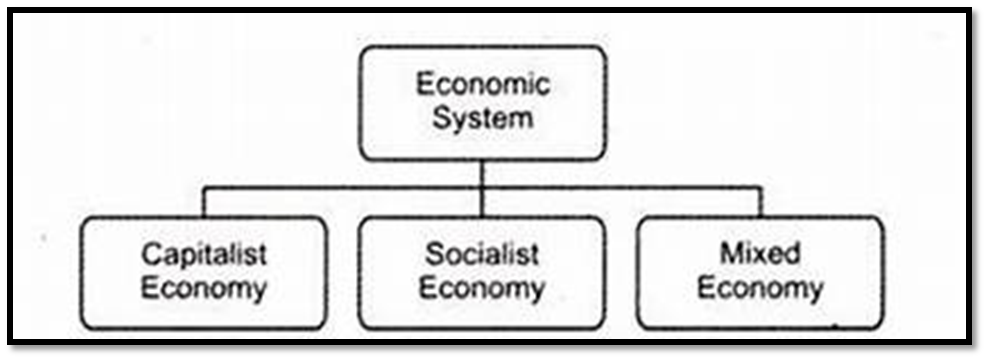TYPES OF ECONOMIC SYSTEMS

CAPITALIST ECONOMY
Definition: An economy where the means of production are owned by individuals who can freely take their decisions with the motive of profit-maximization is called a capitalist economy.
Features of the Capitalist Economy are:
- Private ownership of means of production
- Profit maximization is the primary motive and government is confined to ensuring law and order.
Merits:
- Promotes self-interest, profit maximization and acceleration of GDP growth.
Demerits:
- The collective interest of society is ignored.
- Production of only high-profit goods.
- Growth without social justice.
SOCIALIST ECONOMY
Definition: The economy in which there is the social ownership of means of production and the important decisions are taken by some central authority of the government with a view to maximizing social welfare is called a socialist economy.
Features of a Socialist Economy are:
- Collective ownership of means of production.
- Maximized social welfare due to direct participation of the state.
Merits:
- Tries to achieve equality in the distribution of income, along with inclusive growth and social justice.
Demerits:
- Slow GDP growth
- Profit maximization is replaced by the principle of ‘ Equity and Justice’
MIXED ECONOMY
Definition: An economy, which has both private and public ownership of means of production, is called a Mixed economy.
Features of a Mixed economy are:
- Private and government (public) ownership.
- Profit- maximization is the governing principle in decisions for Private ownership and Social welfare in Government or Public ownership.
Merits:
- Combines the best features of both capitalist and socialist economies like GDP growth ensured by Private entrepreneurs and social justice by the government.
Demerits:
- The government sector is often inflicted with corruption therefore a low level of efficiency.
India adopted a mixed economy.
Some leaders were in favor of a Socialist Economy however in a democratic country like India, complete dilution of private ownership was not possible. The capital economic system did not appeal to our first prime minister, as there would be fewer chances of improvement in the quality of life of people. As a result, the Mixed economy was adopted. (with best features of both socialist and capitalist economy).

 PathSet Publications
PathSet Publications
